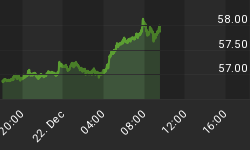A mild surprise on Monday afternoon from Alcoa, which beat a significantly-lowered consensus estimate, wasn't enough to sustain stocks overnight. Another pulse higher came when the broader group of European finance ministers completed the Memorandum of Understanding (MoU) for the Spanish bailout, which included a provision for €30bln of the money by the end of the month. This rally too failed, and the reason Bloomberg cited was funny.
Bloomberg said "U.S. Stocks Fall on Earnings Pessimism..." According to the article, "profits for the entire S&P 500 are projected to have fallen 1.8 percent."
That's funny, because it suggests that this is somehow a surprise, today. Analyst forecasts have been coming down, to be sure, but they've been weak on Q2 for a long time. And profit margins have been at very high levels for a while now (see Chart, source Bloomberg), so downward pressure was overdue.

Combine weak growth with rising cost pressures and you will eventually get margin compression. The chart below (Source: Bloomberg) shows the spread of core CPI minus core PPI, in white, plotted against the trailing 12-month EPS of the S&P 500. Note how when the spread of output prices (CPI) compared to input prices (PPI) is widening, it augurs well for profits one-year or so forward, and vice-versa.

Really, the remarkable thing is that earnings have remained elevated for so long, even though producer prices have been increasing faster than consumer prices for a while now. My theory is that since that spread is narrow, and the labor market is very weak, there were ample opportunities for employers to squeeze just a bit more out of their workers. This shows up, of course, in improved margins. But - and just as important, if not more so - it is a game that cannot continue forever. Unless producer prices stop rising faster than consumer prices, earnings are going to come back down to earth. So investors find themselves with a bit of a conundrum. If CPI accelerates, this is good for earnings (as long as it outpaces PPI!) but bad for multiples historically. If CPI stays down, then unless producer prices slacken appreciably, the current earnings are unsustainable. I will say it again: stocks shouldn't be up here.
Incidentally, I wouldn't read too much into the apparent correlation of levels on the chart above. Over time, the yellow line will clearly move up and to the right, while the white line is designed to be mean-reverting. If I had the data, I'd make the yellow line the year-on-year change in earnings and see how the correlation holds up over time.
.
This is my last article for a couple of weeks. I am going to be traveling to Texas and Colorado, with family and to visit family, until late in July. Enjoy the silence!















